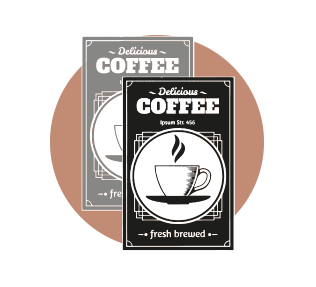Reducing packaging update costs: proven methods
FMCG (Fast-Moving Consumer Goods) companies often face challenges in managing product revision workflows due to the complexity and scale of their...
7 min read
Joanna Gränström
:
2023-06-19 15:05

If you’re not yet using a system or hub for managing packaging artworks, your company probably struggles for no reason. To share information and handle approval processes through emails, file shares and even paper copies back and forth, manage projects with humongous Excel lists and store all your valuable design assets in less than organized spaces (to mention some of the common pre-hub activities) costs loads of time and is - to be frank - insecure.
However, even if you use an artwork management hub today, it could still be unnecessarily time consuming and complicated. Artwork management hubs can be very different, and not every hub will provide you with features that you should expect in order to save valuable time and be in control with minimum effort.
Some of the largest and most common artwork management systems were actually created by and for prepress suppliers, in times when prepress became more digital. The prepress suppliers believe that artwork management is similar to prepress work (e.g. the same or similar software is used) and saw an opportunity to widen their scope a notch with some add-ons, such as the artwork approval process. The result is software that handles artworks as if they were just one-time print ready files and not the life cycle driven resources that they are.
Prepress and artwork management are NOT the same. Widely speaking, one is about looking at dots through loupes, and the other is about how your organisation can maximise efficiency. Big leap there, I know. Basically, it’s about whether you put in in-depth knowledge of the prepress industry into a software, or ditto of brand owners’ total internal and external processes and needs. Artwork management is NOT an add-on to prepress, it’s in fact central in your brand management.
Managing an artwork management agency, I hear from my colleagues working with different systems every day that they are perceived as complicated and not very user friendly, limiting due to forcing automated workflows, focused on the wrong stuff (prepress stuff) and klicky, to mention a few.
My experience is that people that work with brands have a business focus: sell products. In itself a vast mission indeed; no need to complicate things further by using a system that limits you and slows you down. Instead, you should look for software that truly enables you to stay focused on the product and enhance your work with the brand. You should be able to just put the pedal to the metal and go!
If you’re not the type of person that thrives when learning new, complicated systems each day, or if you’re simply new on the job, you would benefit from a workplace that’s easy to learn and manage. My bet is that you already have lots of stuff to learn and keep up with, so wouldn’t it be nice if just one of the systems that you use daily would be just… easy?
One would argue that managing advanced and extensive tasks would naturally create an extensive and complicated software. I disagree. Even the most complicated setting can be made less complex, it’s a software development choice. Many systems give in to the complexity, adding more and more options and rules. But those who truly respect the brand owners’ business will put in that extra mile to make things easy. A couple of years ago, we set on creating an easy content creation system. Six months into development we realized that it’s too complex. So we started all over again. It's that simple.
So – how can complex become easy? For starters, a system can be based on standards you already know, such as your computer desktop, folders, drag & drop etc. It can also require stuff from you only when you have them, not in advance. Moving on, there can be options for choosing a fast lane with minimum effort when you’re in a hurry, and more overviews and structure when you require control. There are also many ways to highlight what you should prioritize, making it easy to just go in, do it and move on.
I recommend that you look for a system that covers all your needs but feels easy when it's presented to you and when you try it.
Some of the largest system developers don’t understand the product lifecycle. Under its lifetime, a product or even a certain packaging undergoes numeral design and content updates. The artwork management hub should include both these stages and more.
Naturally, there should be a way to save old graphics along with the new so that there is a traceable history.
Furthermore, there are two phases in the artwork lifecycle: undergoing an update (project stage) OR being sold (what we call on-shelf). So why not manage both stages in the same system? During the project stage you work with the artwork updates, and during the on-shelf stage you should be able to find and access artworks easily, be able to plan for future updates and swiftly share them with whoever needs it. And it’s really time saving and orderly when you can just move the artwork from stage to stage easily within the same system. I don’t know how many times I’ve asked where an artwork is and have been forced to require it manually from some media bank god knows where. That sucks. And delays my work.
Another thing that is fairly ignored in most systems are those items that would be extremely handy to manage along with the artworks, e.g. packshots, campaigns and PoS (additional stuff you place in the store to sell your products).
Look for a system that allows you to manage as much as possible in one single place, that truly give you control and saves loads of time.
It’s easy to imagine that a hub based on a fixed and ever-so-detailed automated process flow is the key to everyone doing everything “correctly”, and thus provides more security. But ask yourself how organized your team really is in the beginning of a project, and how far you’ll reach with a system that e.g. requires lots of data to be filled in just to start the project. Does the system help you move on, or is it stopping or delaying you?
Every person is NOT the same, so instead of forcing everyone into the same complex and narrow shape, you should require a system with options that enables everyone to do their optimal job with great result, even though they do it slightly different. A system that enables flexibility (with a limited amount of options) instead of an automated flow can still handle all the repetitious tasks for you, such as notifications, reminders etc, but it doesn’t frame and limit your work.
Example: If you can enter close to zero content and information (that you don’t have anyway) when you start a project, you can start it sooner and get everybody working on what you actually DO have. Content and info can come later, when it’s created.
I know many companies with different category teams working in very different ways, but all with great results. I believe that brand people are both smart and creative. You don't need flows to limit your work. You need flexibility because every project is different and every person is different.
Some systems persist with including ink type, ink density, separations and the like in your approval process. Ask yourself: should I know about this stuff? Should I be the one approving an artwork with that data included?
The answer is of course ‘no’. If you don’t happen to be a prepress guru with extensive knowledge of all printing techniques of course – then you can.
Printing is tricky, and even if you have basic knowledge, there’s absolutely no guarantee that print will turn out the same at two printers even if you use the exact same technical data. Instead, you should engage print experts (ideally with experience from multiple techniques) for securing print – be that top quality or maximum cost save.
The software should be there to help you get a clear overview of the artwork in the proofing process, to enable you and your team to make sure design and content is as it should be - as fast yet as secure as possible. It should provide you with stuff like zoom capabilities, possibilities to compare revisions on top of each other to spot even the slightest change, measurement tools and multiple annotation options. To mention the most obvious.
It's hard and risky enough as it is to approve stuff that prints in thousands of copies and is instantly filled with your product, without the print specific nitty gritty. Business focus. You get the point.
Some features are less visible than others, but oh so dividing between a smooth ride and constant annoyance. Those are e.g. how much you need to do yourself, and how much effort you need to put in.
One thing that really saves time are repetitive tasks being automated. Lots of tasks can be automated in an artwork management system, e.g. email notifications, reminders, status summaries, switching teams when a design has reached a new stage etc. It’s so obvious that it looks funny when some system developers either market email notifications as a special (generating extra cost) feature, or jump on the train only now and write about this fantastic new feature in their newsletters. It’s artwork management hub 1:1 to eliminate every task that can be eliminated – look for that approach.
Another divider between systems is the amount of clicks you need to do before you’re done with something or have reached a destination. Look for systems that require a minimum of clicks, preferably one where you can have everything you need on ONE screen and can drag & drop stuff between places.
Filling in info is another time consumer. Again – look for systems that autofill and enable drag & drop of e.g. email addresses when you need to invite people and share files.
1. The system should be easy to learn and feel easy to work in, though handling the entire artwork management process.
2. You should be able to manage all stages of the artworks, as well as similar media, in one single place.
3. Choose flexibility over limiting work flows. It'll allow you to work efficiently however you choose to do it.
4. Enable yourself to keep your business in focus in the approval process by choosing a system that clearly shares that focus.
5. Aim for a smooth ride without repetitive tasks, loads of clicks and stuff to fill in. Choose a system that does that for you.
I throw this in as well as a bonus. The software you use lots and lots in your work could benefit from being… nice. Preferably good looking, really fast, provide interesting data and maybe even include a tad of humor. Just to make the hours you spend using it rush by as if there was no tomorrow. It would be an easy choice if it also made me a cup of coffee every two hours. But maybe that’s too much to ask...
I hope that my tips help you find that super artwork management hub that I wish for every brand owner. And if you're evaluating systems, have a look at Cway.
Happy hunting and good luck!

FMCG (Fast-Moving Consumer Goods) companies often face challenges in managing product revision workflows due to the complexity and scale of their...

Given the whirlwind nature of product launches, where timing is critical and perfection is imperative, ensuring your artwork proofing process is...

In the fast-paced world of design and product development, creating effective design feedback loops is essential. It's not merely about refining...